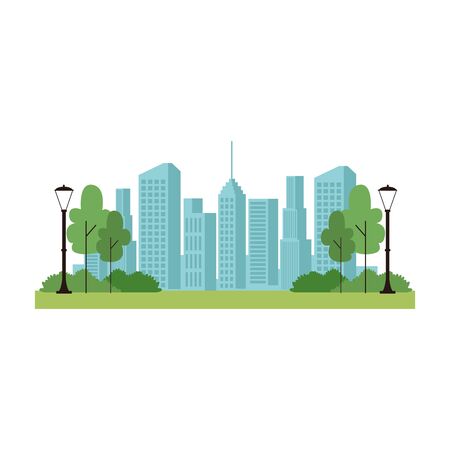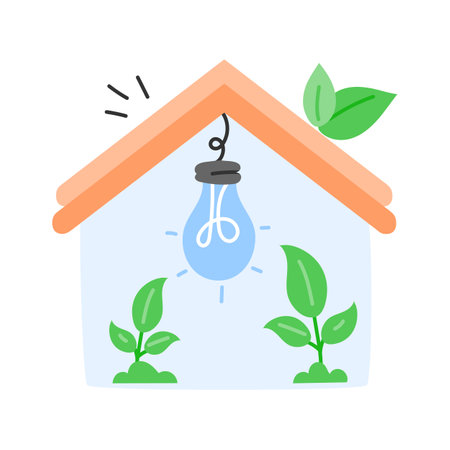Understanding Urban Gardening
Urban gardening is all about growing plants, fruits, vegetables, and herbs in city environments where space is often limited. As more people move to urban areas and become interested in sustainable living, urban gardening has become a popular way to stay connected with nature, improve food security, and beautify city spaces.
Benefits of Urban Gardening
There are many reasons why people choose to garden in the city. Here are some of the top benefits:
| Benefit | Description |
|---|---|
| Fresh Produce | Grow your own fruits and vegetables for better taste and nutrition. |
| Mental Health | Caring for plants can reduce stress and promote relaxation. |
| Sustainability | Lowers your carbon footprint by reducing the need for transportation of food. |
| Aesthetic Value | Adds greenery and beauty to otherwise concrete-heavy environments. |
| Community Engagement | Create connections with neighbors through shared gardening projects. |
Challenges of Gardening in the City
Certain limitations make urban gardening more complex than traditional gardening. Here are a few challenges to be aware of:
- Lack of Space: Many urban homes have limited outdoor areas or no yard at all.
- Poor Soil Quality: Urban soils may be compacted or contaminated, making them unsuitable for planting without modifications.
- Zoning Restrictions: Some cities have rules about what you can grow and where you can grow it.
- Pest Control: Dense populations mean more potential pests like rats or insects that can harm your garden.
- Limited Sunlight: Tall buildings may block sunlight needed for plant growth.
Main Types of Urban Gardens
The good news is that there are several creative ways to garden even in tight urban spaces. Here are some common types of urban gardens:
Container Gardens
This type is perfect for balconies, patios, or windowsills. All you need are pots or containers filled with soil. You can grow herbs, tomatoes, peppers, and even strawberries in small spaces using this method.
Rooftop Gardens
If your building has rooftop access, it could be a great spot for a garden. Rooftop gardens get plenty of sunlight and can be designed with raised beds or large containers. Always check with your building management first to ensure safety and compliance.
Community Plots
A community garden is a shared space where neighbors can come together to grow food. These gardens help foster a sense of community and often receive support from local governments or nonprofits. They’re great options if you don’t have space at home but still want to grow your own produce.
Quick Comparison of Urban Garden Types
| Type | Main Features | Best For |
|---|---|---|
| Container Garden | Potted plants on balconies or windowsills; easy to manage. | Apartments with little outdoor space |
| Rooftop Garden | Larger setups; needs structural support; lots of sun exposure. | Larger buildings with accessible rooftops |
| Community Plot | A shared garden area; often managed by local organizations. | Cities with active neighborhood groups or limited private space |
No matter what kind of space you live in, theres likely an urban gardening solution that will work for you. The key is understanding your environment and choosing the right setup based on your needs and resources.
2. Assessing Your Space and Environment
Before you start planting, its important to take a close look at your space and understand the unique conditions of your urban environment. Every city garden is different, whether youre working with a small balcony, rooftop, or shared community lot. Heres how to assess your space so you can plan a productive and sustainable urban garden.
Check Your Available Space
Begin by measuring the area where you want to garden. Knowing your square footage helps determine what kind of setup will work best — raised beds, containers, vertical gardens, or hanging baskets. Don’t forget to consider accessibility and safety, especially for rooftops or window boxes.
Understand Light Exposure
Sunlight is one of the most critical factors in successful gardening. Observe how much sunlight your space gets throughout the day. Most vegetables and herbs need at least 6 hours of direct sunlight daily.
Light Exposure Chart
| Light Level | Description | Suitable Plants |
|---|---|---|
| Full Sun | 6+ hours of direct sunlight | Tomatoes, Peppers, Basil |
| Partial Sun | 4–6 hours of direct sunlight | Lettuce, Spinach, Chard |
| Shade | Less than 4 hours of sunlight | Mint, Ferns, Hostas |
Know Your Local Climate
Your regions climate plays a big role in what you can grow and when. Look up your USDA Hardiness Zone to determine average frost dates and seasonal temperatures. This info helps you pick plants that thrive in your local conditions and know when to plant them.
Evaluate Soil Conditions (If Applicable)
If youre gardening directly in the ground or using raised beds with existing soil, test for quality and contamination—especially in older urban areas where soil may contain heavy metals. You can buy a simple soil test kit or send samples to a local extension service. For container gardening, use high-quality potting mix designed for vegetables or herbs.
Soil Quality Checklist:
- Texture: Should be crumbly and well-draining.
- pH Level: Aim for 6.0–7.0 for most edible plants.
- Nutrients: Check levels of nitrogen (N), phosphorus (P), and potassium (K).
- Contamination: Test for lead or other pollutants if using native soil.
Consider Microclimates and Urban Challenges
Cities create microclimates due to buildings, pavement, and traffic. Walls may block sun but also retain heat; wind tunnels can dry out plants faster. Observe these patterns in your space so you can adapt with windbreaks, shade cloths, or reflective surfaces as needed.
A little observation goes a long way when planning an urban garden. By understanding your spaces light exposure, climate zone, soil quality, and unique challenges, youll be better equipped to choose the right layout and plants that will thrive in your city environment.

3. Choosing the Right Plants for Productivity
When youre working with limited space in an urban setting, every inch of your garden counts. Picking the right plants can make the difference between a thriving mini-farm and a patch of frustration. The key is to focus on high-yield, low-maintenance plants that are well-suited to smaller or unconventional spaces like balconies, rooftops, windowsills, or vertical planters.
What Grows Best in Small Spaces?
Certain fruits, vegetables, and herbs naturally do better in tight quarters. Look for varieties labeled as “compact,” “dwarf,” or “bush” — these are bred specifically for container or small-space gardening. Heres a quick look at some of the best options:
| Plant Type | Recommended Varieties | Why Theyre Great for Urban Gardens |
|---|---|---|
| Vegetables |
|
Fast-growing, compact size, and productive in containers. |
| Fruits |
|
Small root systems and ideal for pots or hanging baskets. |
| Herbs |
|
Most herbs thrive in pots and can be grown indoors year-round. |
Tips for Selecting Productive Urban Plants
1. Prioritize Yield per Square Foot
Select crops that give you more food per plant or per square foot. Leafy greens like kale and spinach can be harvested multiple times, making them great value in tight spaces.
2. Go Vertical Whenever Possible
Crops like pole beans, cucumbers, and even some squash varieties can grow upward using trellises or vertical supports — freeing up ground space while still producing plenty.
3. Stick with Low-Maintenance Choices
If your schedule is busy or youre new to gardening, opt for plants that dont require constant attention. Herbs like rosemary and thyme need little water and care once established.
4. Consider Sunlight & Microclimates
Urban gardens often have unique lighting conditions due to buildings and shadows. Track how much sunlight your space gets daily and match your plant choices accordingly — leafy greens are more shade-tolerant than fruiting plants like tomatoes.
Quick Tip:
If your space gets less than 6 hours of sun daily, stick with leafy greens and herbs; if it gets 6+ hours, you can try fruiting vegetables and berries.
The Bottom Line on Plant Selection
Your urban garden can be both beautiful and bountiful with the right plant choices. By focusing on compact, high-yield varieties suited to your specific space and light conditions, youll maximize productivity without overwhelming yourself. Whether its a window box full of herbs or a rooftop lined with tomato containers, smart plant selection is the first step to a successful city garden.
4. Design Strategies for Small Spaces
Urban gardening often means working with limited space, but that doesn’t mean you have to sacrifice productivity or style. With the right design strategies, even the smallest balcony, patio, or rooftop can become a thriving green oasis. Here are some practical and creative solutions to make the most of your city garden.
Vertical Gardening
One of the easiest ways to maximize space is by growing up instead of out. Vertical gardening uses walls, fences, or specially designed structures to support plants and save valuable ground space. This method is ideal for climbing plants like tomatoes, cucumbers, beans, or decorative vines.
Popular Vertical Gardening Options:
| Option | Description | Best For |
|---|---|---|
| Wall Planters | Pockets or containers mounted on walls | Herbs, lettuce, strawberries |
| Trellises & Arches | Structures that support climbing plants | Cucumbers, beans, morning glories |
| Pallet Gardens | Recycled pallets turned into vertical beds | Lettuce, herbs, small flowers |
Raised Beds
Raised beds are another smart solution for urban gardeners. They allow for better control over soil quality and drainage while making gardening more accessible—especially in areas with poor or contaminated soil. They also help define growing areas in tight spaces like rooftops or courtyards.
Benefits of Raised Beds:
- Improved soil drainage and aeration
- Easier weed and pest control
- Less bending and kneeling—great for accessibility
- Aesthetic organization in small areas
Compact Plant Arrangements
Planning your layout carefully ensures you get the most from every square foot. Grouping plants with similar light and water needs helps simplify care routines. Using container gardens also allows for easy rearrangement based on seasonal changes or sun patterns.
Tips for Smart Plant Placement:
- Place taller plants at the back or center (depending on sunlight direction)
- Use hanging baskets for trailing herbs or flowers
- Select compact or dwarf plant varieties suited for small spaces
- Create multi-level planting zones using steps or plant stands
By combining these design techniques—vertical elements, raised beds, and efficient plant arrangements—you can turn even the smallest urban space into a productive and beautiful garden tailored to your lifestyle.
5. Sustainable Practices and Smart Maintenance
Creating a thriving urban garden isn’t just about planting the right crops — it’s also about maintaining your space in a way that’s environmentally friendly and easy to manage year-round. In this section, we’ll explore simple, sustainable gardening techniques that fit into city living, plus smart tips to keep your garden healthy with minimal hassle.
Eco-Friendly Gardening Techniques
Urban gardening is the perfect opportunity to go green — literally and figuratively. Here are some eco-conscious methods you can start using today:
Composting
Turn kitchen scraps and yard waste into rich, nutritious soil. Composting reduces landfill waste and provides natural fertilizer for your plants.
- What to compost: Vegetable peels, coffee grounds, eggshells, leaves
- Avoid: Meat, dairy, oily foods
Rainwater Harvesting
Collect rainwater using barrels or rooftop systems to water your garden. It’s free, sustainable, and helps conserve municipal water supplies.
- Tip: Use a fine mesh cover over barrels to keep mosquitoes out.
Organic Pest Control
Ditch harsh chemicals and try natural pest control methods instead:
| Pest | Natural Solution |
|---|---|
| Aphids | Spray with a mixture of water and a few drops of dish soap |
| Slugs | Lure them into traps with beer-filled containers |
| Caterpillars | Add beneficial insects like ladybugs or use neem oil spray |
Smart Maintenance Tips
A little planning goes a long way in keeping your garden productive through every season. Follow these maintenance habits for success:
Create a Seasonal Schedule
- Spring: Plant seeds, add compost, check irrigation systems
- Summer: Water regularly, monitor pests, harvest frequently
- Fall: Clean up dead plants, start composting fallen leaves
- Winter: Protect plants with covers or move pots indoors as needed
Irrigation Efficiency
If possible, install drip irrigation or soaker hoses to minimize water waste while delivering moisture directly to plant roots.
Tidy Up Regularly
A well-maintained garden looks better and functions better. Remove weeds weekly, prune overgrown plants, and clear debris to prevent pests and disease.


